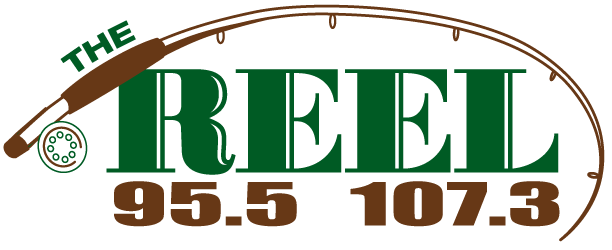
The e-mail that the National Football League had been awaiting for years finally arrived a few days after 2008’s Super Bowl XLII. On his train commute home, Charles Coplin, then the NFL’s head of programming, saw a notification pop up on his BlackBerry — a message from Jon Landau, Bruce Springsteen’s manager.
As Coplin read, stunned and thrilled, Landau complimented Coplin and his colleagues on the halftime show, which featured Tom Petty and the Heartbreakers, and expressed interest in Springsteen doing one himself. “When I got the note, it was, ‘Wow, they actually like what we do and they’re actually interested,’” Coplin recalled to RS in 2009. “It was one of the good e-mails.”
The result of that exchange was Springsteen and the E Street Band’s first-ever halftime show, part of Super Bowl XLIII on February 1st, 2009. During the set-in-stone 12 minutes allotted for the performance, they tore through “Tenth Avenue Freeze-Out,” “Born to Run,” the title song of Working on a Dream and, finally, “Glory Days.”
By then, Coplin and his colleagues had reeled in a record store’s worth of classic rock for halftime shows, including Petty, the Rolling Stones, U2 and Paul McCartney; the Who would play the following year, 2010. But booking Springsteen was an elusive dream itself. “It was always the one — the one that would be great and perfect,” Coplin recalled. “They were resistant for a lot of years, but I think they thought, ‘The Super Bowl isn’t a novelty act anymore. It’s a real credible place for an artist to perform.’ But it was still one of those things you never thought was going to happen.”
By 2009, though, rock times had changed. Chains like Tower Records and Virgin had closed, and many classic-rock stations had switched to other formats. To promote new albums, rock veterans needed any promotional outlets they could get, which ranged from hawking their records on QVC (as James Taylor did in 2008) or licensing their songs in commercials (as Dylan had done, including as part of a Chrysler ad at the 2007 Super Bowl).
For Springsteen, who released Working on a Dream five days before the big game, the lure of playing the halftime show was also partly promotional. “We have a new album coming out,” he joked at a press conference before the game. “We have our mercenary reasons, of course.” Later, he told a backstage interviewer, “We want to attract people’s attention. It’s as simple as that.” The deal between the NFL and the Springsteen camp was finalized in September 2008; per NFL rules, Springsteen wouldn’t be paid, but the NFL would pay for all the production costs.
Not surprisingly, Springsteen took to the task diligently. According to Coplin, the band “rehearsed over and over again.” On his own website, Springsteen later chronicled how he felt before he took the large, catwalk-enhanced stage. “I’m somewhat nervous,” he wrote. “It’s not the usual pre-show jitters, not ‘butterflies,’ it’s not wardrobe malfunction anticipation anxiety, I’m talking about five minutes to beach landing, ‘Right Stuff,’ ‘Lord Don’t Let Me Screw the Pooch in Front of 100 Million People one of the biggest television audiences since dinosaurs first screwed on earth kind of semi-terror.’ I feel like I’ve just taken a syringe of adrenalin straight to the heart.”
Springsteen wasn’t allowed to announce the set list before the live performance, but as viewers saw as soon as he and the E Street Band started their set that night at Tampa’s Raymond James Stadium, Springsteen more than threw himself into the format. “I want you to step back from the guacamole dip, I want you to put the chicken fingers down and turn your television all the way up,” he announced as the show began, pointing into a camera.
Those comments, Coplin said, came from Springsteen himself: “He really embraced the idea of the Super Bowl.” He certainly did. Springsteen inserted a reference to the event in “Tenth Avenue Freeze-Out,” tweaking the lyric to, “When Scooter and the Big Man bust the Super Bowl in half.” The opening line about a baseball player in “Glory Days” was changed to a quarterback. During a brainstorming session with executives, someone suggested a referee run onto the stage for added humor. Springsteen thought the idea was hilarious, and sure enough, a referee appeared during the climax of “Glory Days” and threw down a yellow flag, which signaled a game delay. Fireworks were intermittently set off, and a gospel choir joined the band for “Working on a Dream.”
But perhaps the most memorable moment came during Sprinter’s cross-stage slide, which became a crotch shot right into the camera. “Too much adrenalin, a late drop, too much speed, here I come [camera man] Mike … BOOM!” Springsteen wrote in a blog on his website. “And I’m onto his camera, the lens implanted into my chest with one leg off the stage.”
All the effort was worth it; Working on a Dream would hit Number One on the chart, and the telecast was seen by 98.7 million viewers, then a record for the Super Bowl. While some may have scratched their heads at the thought of Springsteen playing a halftime show, he himself saw it in a larger, organic terms. “The Super Bowl has become a national experience,” Springsteen said before the show. “It’s an experience you have with the entire country and by extension the world. That’s something … we’ve been interested in that kind of conversation in a lot of different ways.”
